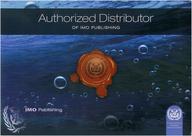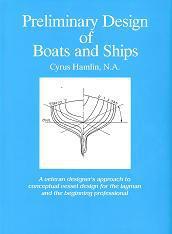Catálogo - LIBROS NÁUTICOS - Teoría del buque, Construcción naval
Preliminary design of boats and ships
Autor: Cyrus Hamlin
Editorial: CMP
Año de edición: 2.010 (1ª edición)
9780870336218
Encuadernación: cartoné
294 pág.
18,5 x 25,5 cm.
35,00€
Contenido:
Intended for people who are not boat designers, this book describes how to bring a dream boat into being.
Written by an experienced naval architect, it prepares intelligent amateurs to create conceptual vessel designs ready for a naval architect’s finishing touches. Included are all the basic rationales and data needed to undertake a designing project, presented in a style that successfully bridges the gap between the technical approach of naval architecture books and the over-simplification of consumer magazine articles.
The book provides all the essential information, including a discussion of vessel stability and trim. Mathematical applications are demystified as much as possible.
Although most naval architecture books deal with only one type of vessel, this volume covers a wide variety of watercraft. It can be equally useful if your envisioning a modest crusing yacht or a sixty-foot fishing boat.
Índice:
Figures
Tables
Preface
Introduction
PART I. GROUNDWORK
1. TOOLS OF THE TRADE
The sketch designer´s tool kit: drawing paper, pencils and pens, measuring devices, triangles, and straight edges
Methods of reproduction
Sources of information
2. SKETCHING
Sketching explained
Freehand drawing
Hints on succesful sketching
Laying out a sketch
Your first sketch
3. VESSEL GEOMETRY
Showing the hull shape: models, drawings
Lines drawing: profile, plan, sections, buttocks, waterlines, diagonals
DWL (design waterline)
Displacement
Form coefficients
Making a pickle model
4. CALCULATIONS
High school level math helpful
Exponents and space
Reference axes: X, Y, Z
Relativity and similitude
Measurement of areas and centers
Moments
Use of graphs
Curves of form
5. THE FORCES OF NATURE
Characteristics of fluids
Buoyancy
Viscosity
Flow of a fluid (air or water) over a body
Laminar and turbulent flow
Waves
Acceleration
6. VESSELS IN NATURE
Arcimedes´principle
Displacement
Trim
Natural rolling period
Metacentric height, GM
Turning and course keeping
Stability
Six types of vessel motion
Moments of inertia
Speed-legth radio, SLR
Bulbous bow
7. PEPLE AFLOAT
Watercraft a universe
The effect of motion on human activities and well-being
Safety
Comfort afloat
Control of shipboard environment
Human dimensions
PART II. THE ACTUAL DESIGN
8. THE DESIGN PROCESS
Design starts in someone´s head
Design spiral
Steps from concept to architect
You and the naval architect
Plan format
Schematics
Model testing
9. A VESSEL´S FUNCTION
"Plan for reality, not dreams"
Defining the role of the vessel
Safety
10. ESTHETICS AND DELIGHT
Importance of appearance
Form follows function
Assuring it looks right when built
Checking appearance with a model
11. CONSTRUCTION
Comparison of building materials: wood, steel, aluminium, FRP, ferro-cement
Building methods described
Suitability of material versus vessel size and function
12. POWERING
Vessel resistance, frictional and residual
Oar power
Sail power
Mechanical power
Gasoline versus diesel
Transmission and propulsion devices
Power definitions
Machinery installation
Estimating power required
Propeller sizing
13. ECONOMICS
Estimating vessel building and operating costs
New construction
Used boats
Profit
14. POWER YACHTS
Types: displacement, semidisplacement, planing
Suggestions for hull form
Arrangements
Catamarans
15. SAILING CRAFT
Romance of sail
Stability
Balance
Monohull versus multihull
Light displacement
Types of sailing craft
Estimating displacement and sail area
Rudders
Working sailing craft: passenger, school ships, freighters, research
Historic sailing craft
Sail assist
16. COMMERCIAL CRAFT
Must make money
Function versus cost
Weatherliness
Safety of crew and vessel
Types of commercial craft
Carrying passengers
Designing commercial craft
17. INSTITUTIONAL CRAFT
Types of institutional craft
Specialized functions
Cost
The institutional perspective
PART III. IMPLEMENTATION
18. SPECIFICATIONS
Complete specifications essential
Use of catalogs and manufactures for information
Use of schematic sketches
Checklist of contents
19. A VISIT TO THE NAVAL ARCHITECT
Owner/naval architect/builder relationship
Diagram of complete designing and building process
Design fees
Getting bids
Construction
Trials
APPENDICES
I. ADDRESSES
Professional societies
National and international agencies
Periodicals
II. USEFUL DATA
Weights of materials
English and metric units of measurement and conversionas
III. symbols
Definitions of symbols used in this book
IV. PLANNING FOR PROFITABILITY
"Careful planning maximizes your chances for profitability"
Glossary
Bibliography
Index
Precio: 35,00 €, I.V.A. incluido (4%)
[ Volver ]


